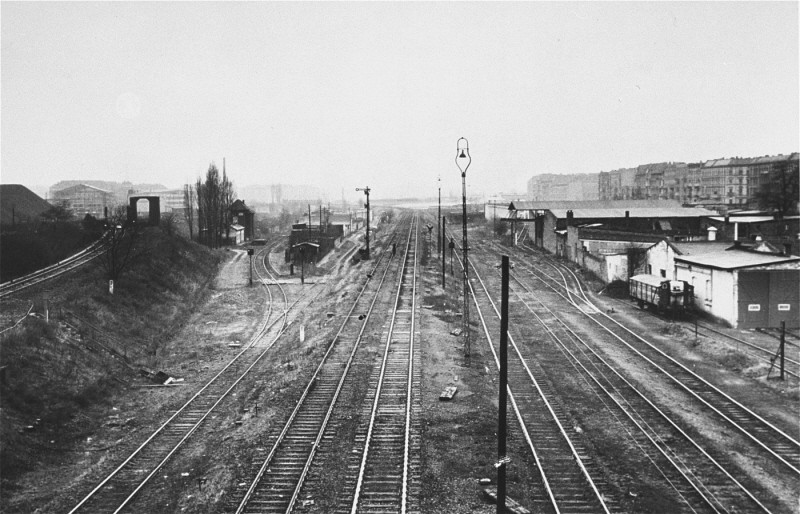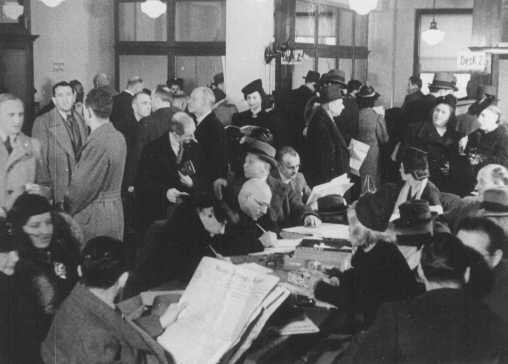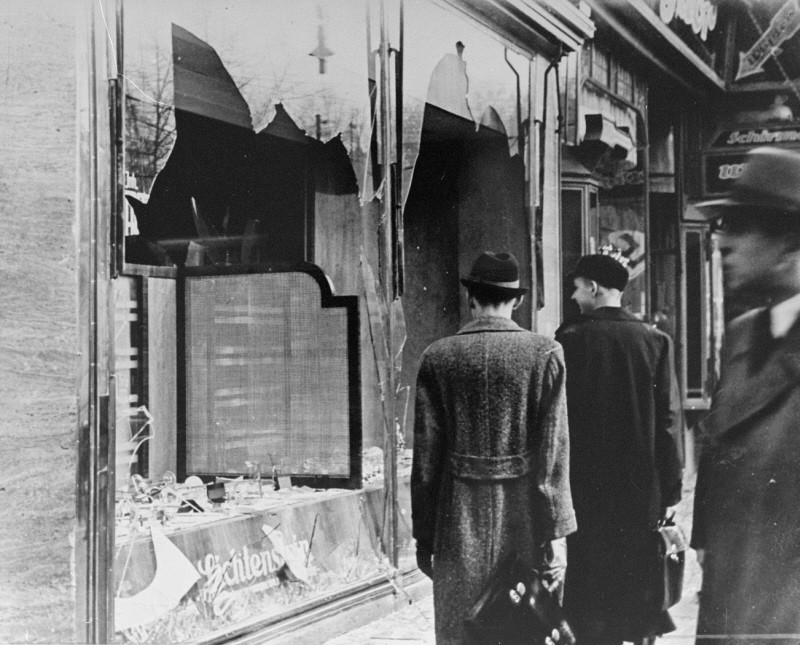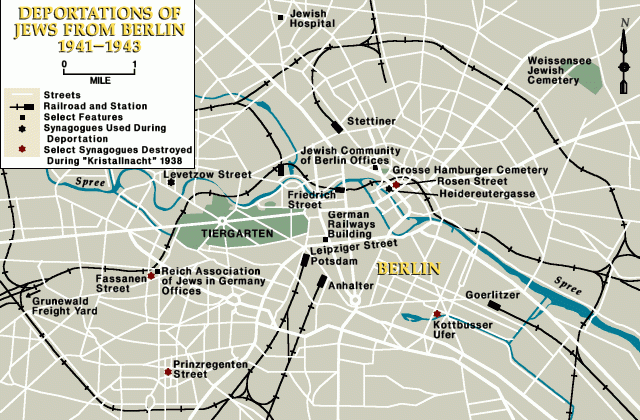
Berlin
The Jewish Community of Berlin
According to a census of June 16, 1933, the Jewish population of Berlin, Germany's capital city, was about 160,000. Berlin's Jewish community was the largest in Germany, comprising more than 32 percent of all Jews in the country. In the face of Nazi persecution, many Jews emigrated from Berlin. Berlin's Jewish population fell to about 80,000 people as a result of emigration from Nazi Germany between 1933 and 1939, despite the movement of other German Jews to Berlin.

Like the Jews of Germany as a whole, the Jews of Berlin faced persecution and discrimination after 1933. On April 1, 1933, Jewish stores and businesses were boycotted, an official action which spurred many subsequent unofficial boycotts of Jewish goods and services. In 1933 most Jewish civil servants and professionals were summarily fired or pensioned. In May of that year, "un-German" books—those written by Jews, liberals, and leftists, among others—were publicly burned in front of the opera house.
Kristallnacht in Berlin
During Kristallnacht, the "Night of Broken Glass" pogrom on November 9–10, 1938, most of Berlin's synagogues were burned down and Jewish-owned stores and homes were looted and vandalized. The shattering of shop windows, especially along Leipziger Street, gave the pogrom its name. Dozens of Jews were killed in Berlin. Thousands were arrested and taken to concentration camps, particularly to Sachsenhausen.

Deportations from Berlin
Deportations of Jews from Berlin to ghettos and killing centers in eastern Europe took place between October 1941 and April 1943. Assembly points for the deportations were established at synagogues on Levetzow Street and Heidereuter Alley, at the Jewish cemetery on Grosse Hamburger Street, and on Rosen Street. Later, even the Jewish home for the aged, the community office building, and the Jewish hospital were used as assembly centers.

After enough Jews for an entire transport (usually 1,000 people) had been assembled in these makeshift centers, they were taken to the rail station—usually the freight yards at Grunewald, sometimes the Anhalter or Putlitz Street train stations. They were then loaded onto passenger rail cars, or sometimes onto freight cars.
The first deportation of Jews from Berlin occurred in October 1941, when 1,000 Jews were transported to the Lodz ghetto in Poland. By January 1942, about 10,000 Jews had been deported from Berlin to ghettos in eastern Europe, mainly Lodz, Riga, Minsk, and Kovno. Elderly Jews from Berlin were deported to Theresienstadt in 1942 and 1943.
Beginning in 1942, Jews were deported from Berlin directly to the killing centers, primarily to Auschwitz-Birkenau. In 1943, most of the staff of the Reich Association of Jews in Germany, the central Jewish representative organization, was deported to Theresienstadt. All Jewish organizations and offices were disbanded. The majority of the remaining Jews in Berlin were deported by the end of April 1943.
More than 60,000 Jews were deported from Berlin:
- more than 10,000 to the ghettos in eastern Europe
- about 15,000 to Theresienstadt
- and more than 35,000 to the killing centers in occupied Poland.
Hundreds of Jews committed suicide rather than submit to the deportations. Thousands of Jews remained in Berlin, mostly those who had gone into hiding and also part-Jews and Jews with a non-Jewish spouse, who were initially excluded from deportation. Almost all of those deported were killed.
Capital of the Third Reich
A center of Jewish life in Germany, Berlin was, as the capital of the Reich, also the center for the planning of the "Final Solution," the Nazi plan to kill the Jews of Europe. The Wannsee Conference, named for the resort district in southwest Berlin where it was held, took place in January 1942. Officials from the Nazi Party, the SS, and the German state met to coordinate and finalize the "solution to the Jewish problem." At the conference, these officials were informed that the SS would be responsible for carrying out the "Final Solution," and that the Jews of Europe would be deported to occupied Poland and killed.
The Surrender of Berlin
The city of Berlin surrendered to Soviet forces in early May 1945. Germany surrendered unconditionally to Allied forces on May 7, ending the "thousand-year Reich" after 12 bloody years.
Critical Thinking Questions
- Investigate the history of the Jews of Berlin and of Germany before 1933.
- Learn about warning signs for mass atrocity. Which warning signs seem evident in the history of the Jewish community of Berlin?
- Have any of these occurred in your country’s history? If so, how were they reinforced or countered?

